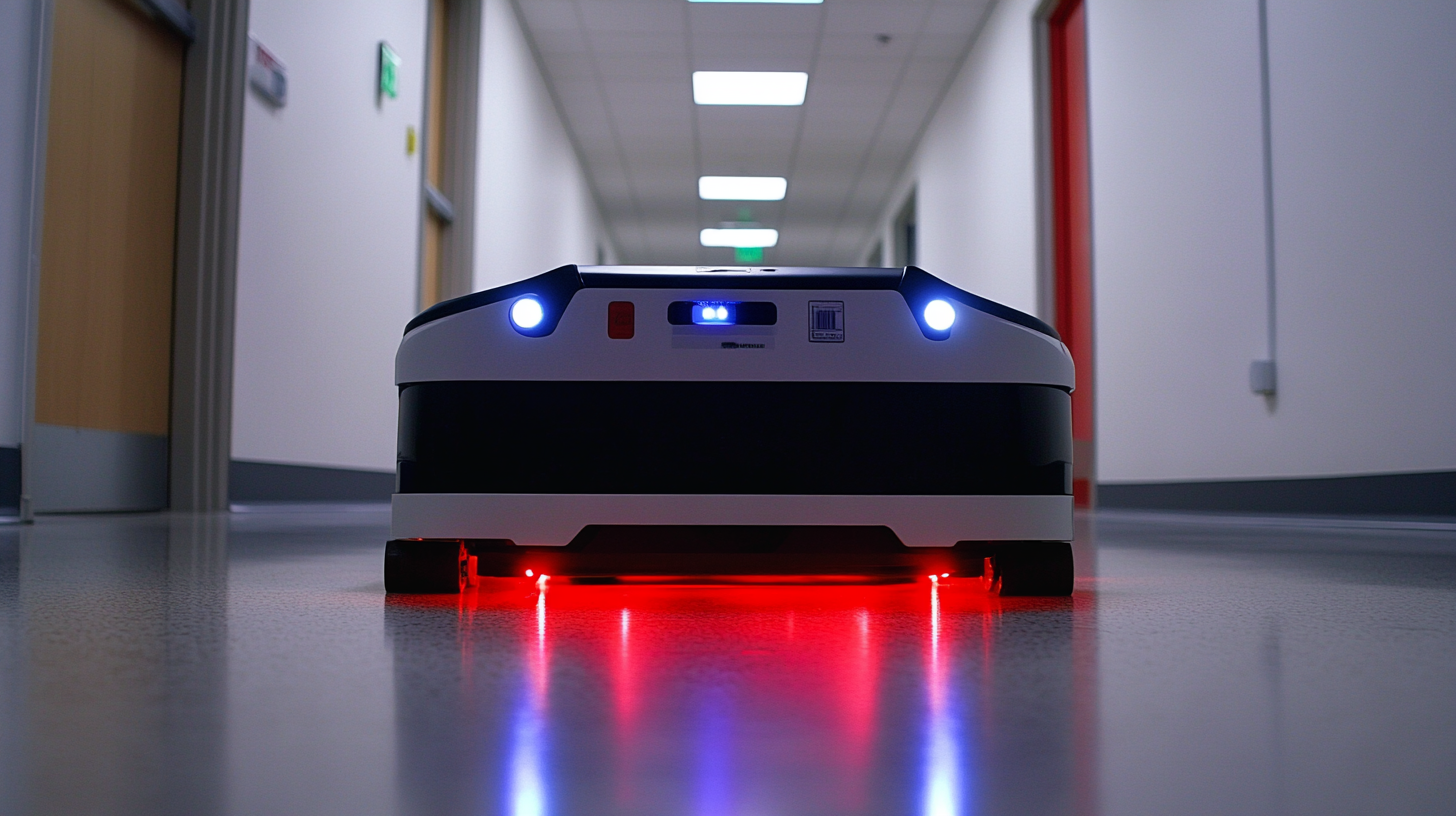

14, Raghava Enclave, Transport Road, Secunderabad, Hyderabad (500009)
©2024 All Rights Reserved by excitechrobot.com
In an era where efficiency and speed are paramount, the logistics industry is witnessing a significant transformation driven by Mobile Robots. According to a report from the International Federation of Robotics, the global market for mobile robotics in logistics is expected to reach $20 billion by 2025, highlighting the growing reliance on automated solutions to streamline supply chains. As companies strive to meet the increasing demands for rapid delivery and cost-effective operations, Mobile Robots have emerged as essential tools for optimizing warehouse management and logistics processes. These technologies not only enhance productivity but also reduce labor costs, as evidenced by a research study from McKinsey, which indicates that automation can potentially improve operational efficiency by up to 25%. As we delve deeper into the compelling metrics surrounding Mobile Robots, it becomes clear that their integration into supply chains is not merely a trend but a transformative shift that is reshaping the industry landscape.

Mobile robots, particularly Autonomous Mobile Robots (AMRs), are revolutionizing supply chain management by streamlining various logistics operations. With the logistics robot market projected to grow significantly, it is estimated that the global market size will reach over $16 billion by 2026, largely driven by the increasing demand for operational efficiency and cost reduction. AMRs enhance warehouse logistics by automating tasks such as picking, sorting, and inventory management, which not only minimizes labor costs but also improves overall productivity.
One key metric to consider is the reduction in operational costs; warehouses utilizing AMRs have reported a decrease in labor costs by up to 30%. This increase in efficiency allows companies to respond quickly to market changes, thus future-proofing their operations. For instance, firms that adopt robotics often see a return on investment within just two years, making a compelling case for integrating these technologies.
Tips: When implementing mobile robots, it's essential to assess your warehouse layout to maximize navigation efficiency. Additionally, invest in training personnel to work alongside these technologies, ensuring a smooth transition and enhancing overall workforce productivity. Lastly, continuously monitor performance metrics to fine-tune operations and maintain a competitive edge in the logistics landscape.
In the rapidly evolving landscape of logistics, mobile robots are emerging as pivotal players, significantly enhancing supply chain efficiency. To truly assess the performance of these robots, it is essential to focus on vital metrics that gauge their effectiveness and impact. One fundamental metric is the overall equipment effectiveness (OEE), which evaluates the productivity of mobile robots by considering their availability, performance efficiency, and quality output. A high OEE indicates that the robots are not only operational but also performing optimally under actual working conditions.
Another critical metric is the cycle time, which measures the duration it takes for a mobile robot to complete a task, such as transporting goods from one location to another. Shorter cycle times often correlate with increased throughput and efficiency within warehouses. Additionally, measuring the robot's return on investment (ROI) offers insights into the financial benefits they bring by comparing the cost savings against their deployment cost. By focusing on these metrics, businesses can make informed decisions about incorporating mobile robots into their supply chains, ensuring they enhance productivity and reduce operational costs.

The integration of mobile robots into supply chains has been progressively reshaping the landscape of logistics and distribution. According to a report from the International Federation of Robotics, the use of mobile robots in warehouses is expected to grow by 30% annually over the next five years. This surge can largely be attributed to the significant impact of automation on enhancing efficiency and reducing costs within supply chain operations. Businesses are increasingly leveraging robotic systems to carry out repetitive tasks, which allows human workers to focus on more strategic activities, ultimately driving productivity.
Moreover, a study by McKinsey reveals that automated solutions can lead to cost reductions of up to 20% in logistics. Mobile robots streamline operations by optimizing inventory management, reducing picking errors, and expediting order fulfillment processes. For instance, companies utilizing autonomous mobile robots have reported a decrease in order processing time by as much as 50%. These metrics demonstrate that the adoption of mobile robots not only boosts operational efficiency but also contributes to the overall profitability of supply chain management, reinforcing the value of automation in today's competitive marketplace.
The implementation of mobile robots in warehouses comes with a host of challenges that businesses must navigate to achieve successful automation. As highlighted by recent research, the North America warehouse robotics market is projected to grow significantly, with mobile robots playing a crucial role in this transformation. However, organizations often face hurdles such as insufficient infrastructure, worker resistance, and integration complexities with existing systems. For instance, a phased implementation approach is vital to mitigate these challenges, allowing companies to gradually adapt their operations to the new technology.
Solutions to these obstacles can be found by leveraging collaborative approaches. Companies need a clear strategic plan that outlines immediate needs as well as long-term goals, ensuring they don't overlook critical aspects of the automation process. The partnership between different technology providers emphasizes the importance of end-to-end automation solutions in logistics and warehousing, showing a trend toward improved efficiency and adaptability in operations. With a projected global market value of USD 19.23 billion by 2023, the push for warehouse automation is more than just a trend; it is a necessary evolution to meet the increasing demands of customers for speed and efficiency.
The integration of mobile robotics into supply chains is not just a trend; it’s a fundamental shift that is reshaping logistics and distribution. As businesses strive to enhance efficiency and reduce operational costs, the adoption of autonomous mobile robots (AMRs) is expected to rise dramatically. These robots are increasingly capable of complex tasks, from picking and sorting to transportation and inventory management. Future trends indicate that with advancements in AI and machine learning, these systems will not only automate routine processes but also improve decision-making with predictive analytics, allowing for a more agile response to fluctuating market demands.
Moreover, the evolution of mobile robotics will continue to be driven by the need for real-time data and enhanced connectivity. The Internet of Things (IoT) will play a crucial role in this development, enabling seamless communication between robots, warehouse management systems, and human operators. This interconnectedness will lead to smarter warehouses where robots can collaborate effectively, thereby optimizing workflows and minimizing delays. As companies invest more in robotics as a service (RaaS) models, we can expect increased accessibility for businesses of all sizes, paving the way for widespread adoption of these transformative technologies in supply chain innovation.

